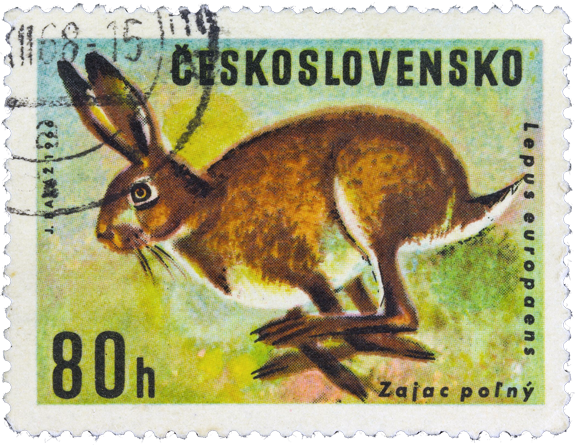Of all game meats, hare is one of the most full-flavored, and one of the most vilified. After all, not only are you eating a rodent, but the critter’s constant running suggests a tough hunt and even tougher meat. To make matters worse, nothing screams dead animal nearly as loud as hung hare meat (at least among the meats available for sale); the smell and taste really need to be acquired.
In New York State, you’re allowed to hunt hares, but not to trap them. As a beginner, my first hunting attempt was totally hopeless, even with the help of a guide and a couple of pointer dogs. Whether you entertain the foolish idea of catching your own wild bunny, or you prefer to let professionals do the hard work and you purchase it (e.g. from D’Artagnan if you live in the US), hare remains a rare and expensive treat. You’ll want to prepare it right. And even if you’re a game lover, you might want to take the gaminess down a notch.
This post will explain how to prepare hare in two different ways, which you can use as the bases for your own recipes (I’ll give you my own Eastern European version in the coming weeks, of course). The wine marinade may not really tenderize the meat as was once believed, but it certainly makes the hare flavor more… accessible. The transglutaminased loins yield two superb medallions to enjoy lightly seared, and the slow-cooked leg confit prevents the meat from getting dry or tough. Both could taste pretty good with a wine reduction.
Marinated hare
Yields 4 servings
1 hare, about 4-5 lb
10 oz peeled onion, sliced
1 bottle Shiraz
2 garlic cloves, sliced
2 juniper berries
2 cloves
1 cardamom pod
4 peppercorns
about 1 oz salt (see below)
- Separate the hare’s fore legs, hind legs, loins, and tenderloins. Discard the carcass. Rinse the meat under cold water, and pat dry.
- In a blender, process half of the onions with the Shiraz, garlic, juniper berries, cloves, cardamom, and peppercorns.
- Weigh the hare legs, and measure 2.4% of that weight in salt to use in the next step.
- Arrange the hare legs in a large bowl, the loins and tenderloins in a smaller bowl, and distribute the rest of the onions over them.
- Pour a quarter of the marinade over the small bowl. Blend the rest of the marinade with the salt and pour into the large bowl.
- Cover with plastic wrap, and marinate for 24 hours.
Hare loin fabrication
Yields 4 servings
marinated hare loins and tenderloins
salt
pepper
transglutaminase (see below)Take the loins out of the marinade and pat dry.
- Take the meat out of the marinade, and pat dry with paper towels. Remove all the silverskin, and season with salt and pepper on both sides.
- Weigh the meat, and measure 1% of that weight in transglutaminase. Sprinkle the transglutaminase over the meat, and fold each loin in 3, adding a tenderloin to each to fill in the thinner ends, so that you get a log-shaped piece of meat about 4″ long. Tightly wrap in two layers of plastic film, and refrigerate for at least 12 hours.
Hare leg confit
Yields 4 servings
marinated hare legs
about 6 oz duck fat (see below)
- Take the legs out of the marinade, and pat dry with paper towels.
- Weigh the legs, and measure 20% of that weight in duck fat. Place the legs and the fat in sous-vide pouches. Do not bend the legs, otherwise they will stretch during cooking and will likely make holes in their pouches.
- Cook in a 166 F water bath for 12 to 16 hours, until very tender. Reserve until use.


1 comment
[…] After last week’s hare loin, this post features the hare legs with another group of typical Latvian winter flavors: potato, sauerkraut, and animal fat. The recipe is pretty short, because most of the work has been done during the hare preparation. […]